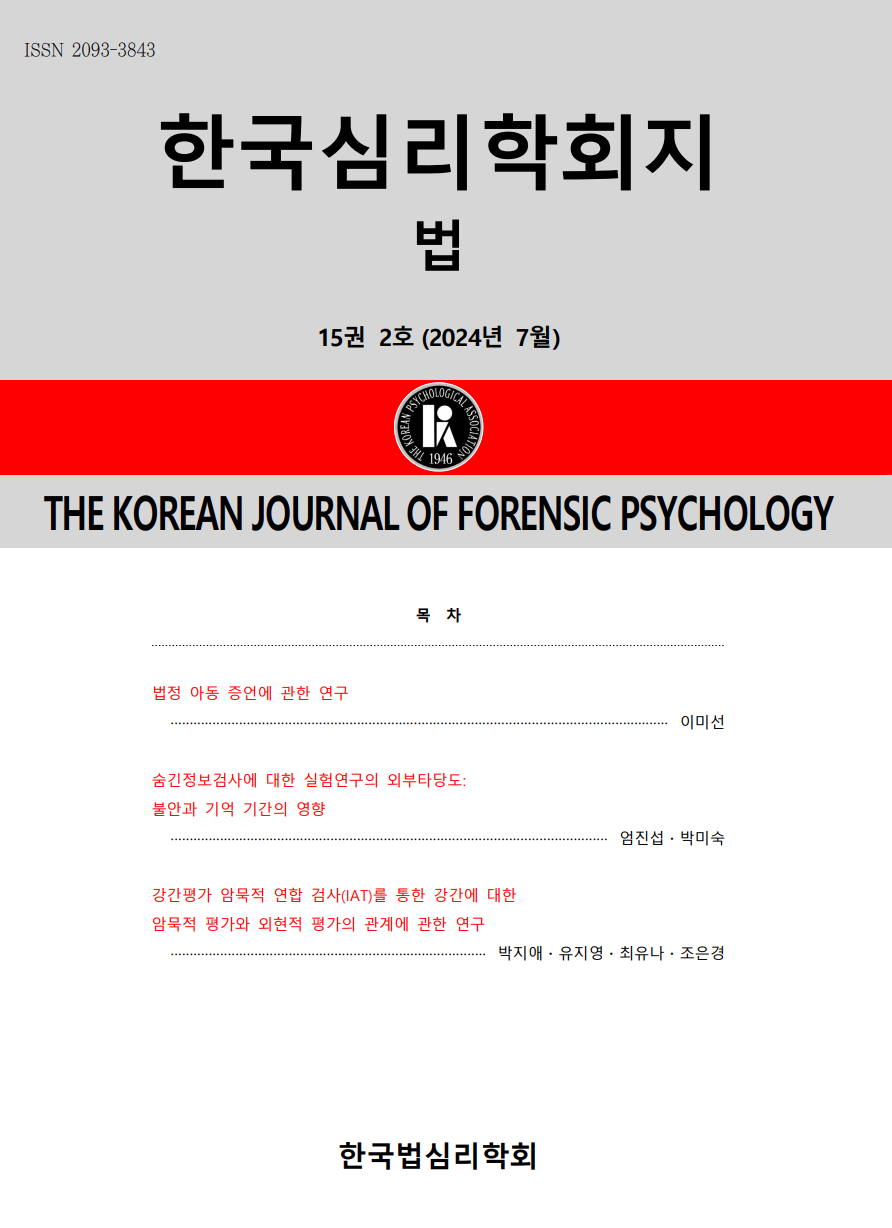open access
메뉴
open access
메뉴 ISSN : 2093-3843
ISSN : 2093-3843
The purpose of this study was to validate the Korean version of the Self-Report Psychopathy Scale (SRPS) and investigate the application possibility of the scale in a institutionalized population. The SRPS was developed to assess psychopathic attributes in a noninstitutionalized population by Levenson, Kiehl, & Fitzpatrick (1995). The samples consisted of 509 undergraduates (as noninstitutionalized sample) and 411 prisoners (as institutionalized sample). The exploratory factor analysis with the noninstitutionalized sample provided the evidence for the construct validity of the SRPS. The result of a confirmatory factor analysis with the noninstitutionalized sample confirmed that 5-factor model was fit to the data. 5-factor confirmatory factor analysis with institutionalized sample was conducted to determine the adequacy of fit in association with the application possibility of the SRPS in a institutionalized population, The result confirmed that the SRPS was a reference data rather than a good scale. Implications were discussed based on the findings. Finally the directions for future study and limitations of this study were discussed.